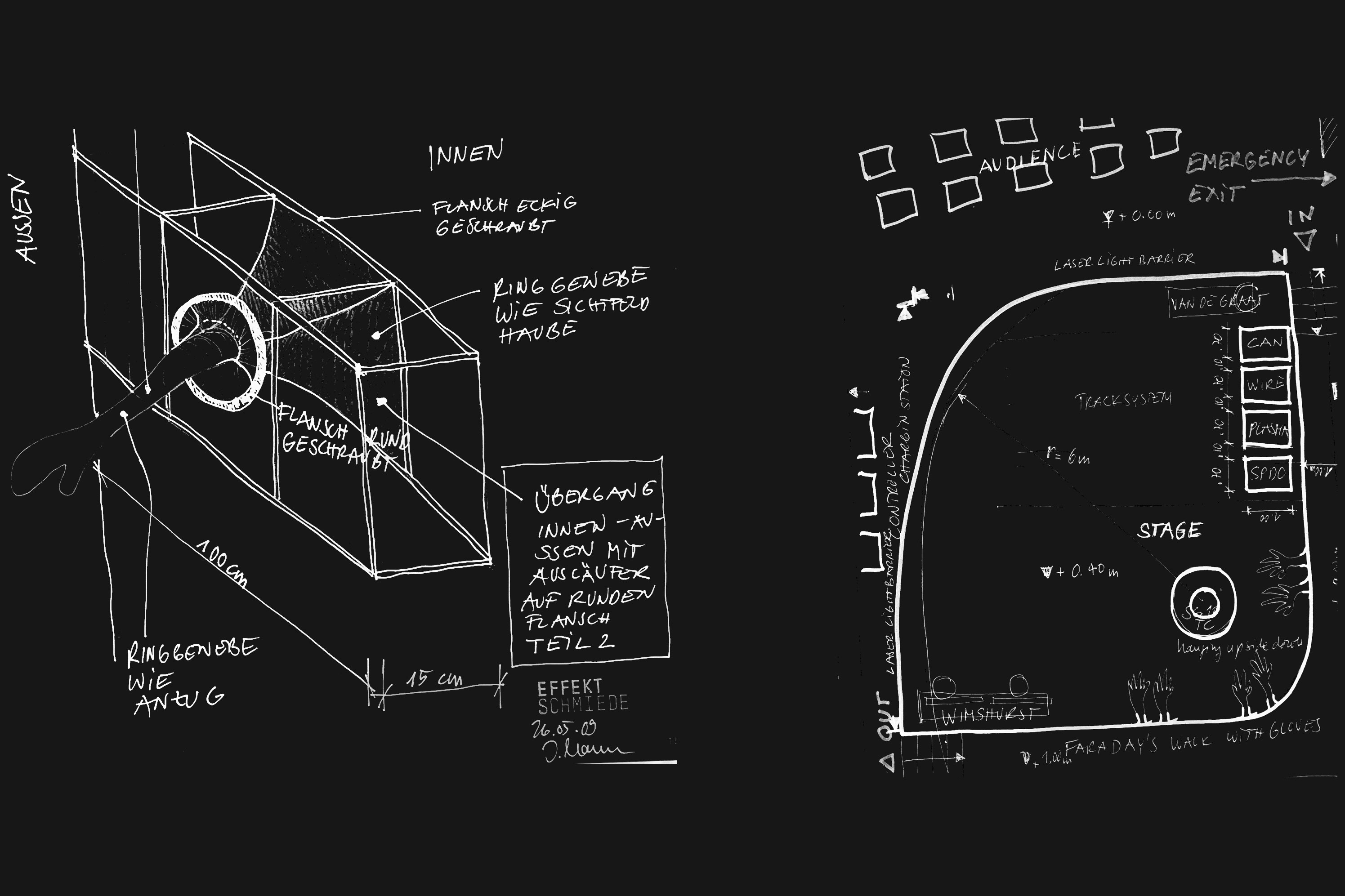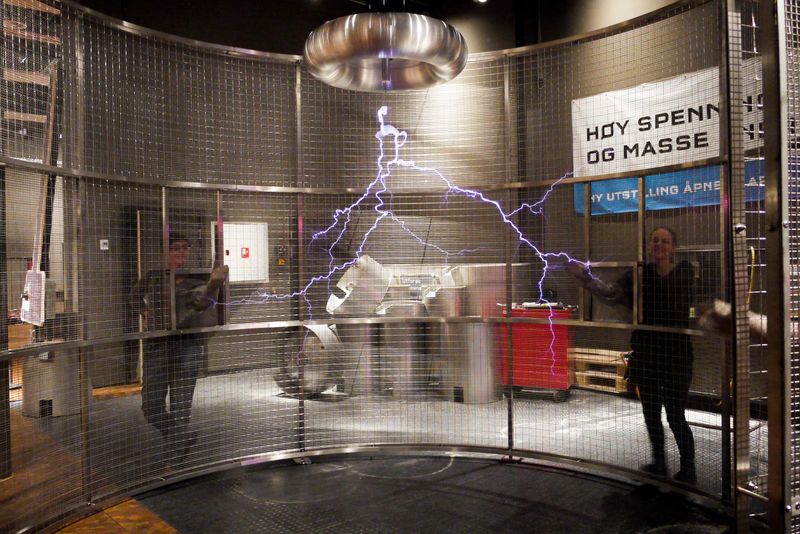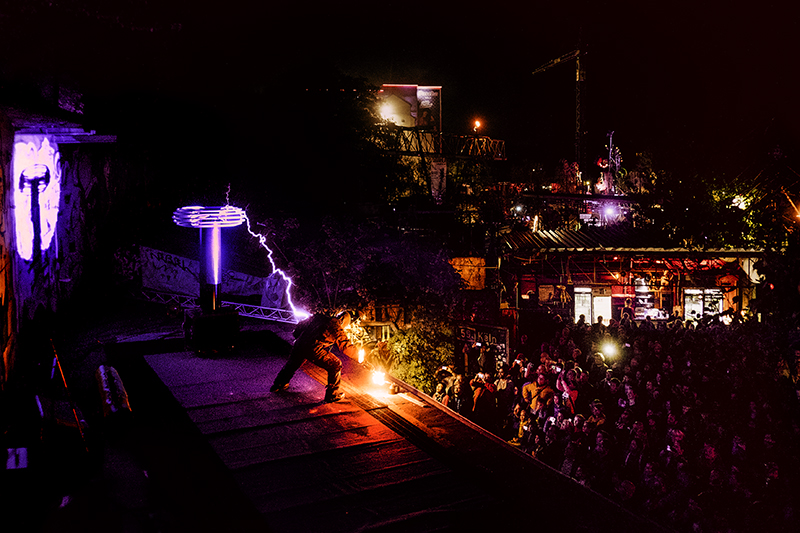The Serbian-American physicist and engineer Nikola Tesla (1856 – 1943) was the inventor of the eponymous Tesla Coil.
Description
Most people nowadays know him as the namesake of an electric car, while others might know him as a bit of an eccentric popstar in the long list of important inventors. In his long career as a scientist and inventor he obtained several hundred patent rights to various inventions.
He originally invented the Tesla Coil in order to transmit electricity without the use of wires. While this did not pan out quite as he had hoped, his invention still finds its use today. The coil is the perfect tool to explore and demonstrate the effects of high frequency alternating current (AC). To us this machine has two key merits: it can simulate lightning through the discharge of electric current in the surrounding air and it can be used to accompany music – both forming excellent preconditions for tantalising stage shows.

Principle
Technically, Tesla Coils are resonant transformers that produce high frequency alternating current. Upon the push of a button, they produce cracking bolts of white or colourful electric discharge.
For most of our performances we use Solid State Tesla Coils that are attached to a CPU. Our coils can play polyphonic audio tracks in MIDI format and can be used to accompany any musical performance. If we program the CPU according to certain scores, these coils do not only produce a lightning bolt effect, but hums, cracks and notes in harmony.
Process
We use Tesla Coils in different sizes and variations. On request, we program the CPU to play a specific melody or bring several coils into harmony with on another, to let them play in tandem.
We also perform ourselves in these high voltage shows, both in museums or in science centres. To do this we make use of our Faraday suit, or allow the visitors themselves to interact with the lightning protected by a Faraday wall.
Example
Fulgurite: The Tesla Sweet
Production of fulgurite in sugar. The discharge from the coil in standard AC mode is passed through a container of sugar for approximately 20 seconds. A piece of fulgurite is formed from sugar and can be passed to the audience as a giveaway.

Example
Faraday: Cage and Suit

A Faraday cage is a protective shell made from conductive material. This cage shields anyone within it from exposure to fields of external static electricity. Michael Faraday first discovered this effect in 1836 and is thus the namesake of both the cage and our suit. Since the beginning of the early 20th century, this technology has been used in events and performances, in order to ensure the safety of performers working with high voltage electricity. There is no electrical field (and thus, no current) within the Faraday cage.

The Faraday suit works according to the same principle. It is made from a stainless steel mesh and is produced in sizes S, M, and L. The suits come with a hood, a pair of trousers with a bib held up by straps, and a shirt and gloves. By virtue of this design, different people of similar build can wear the suit.
